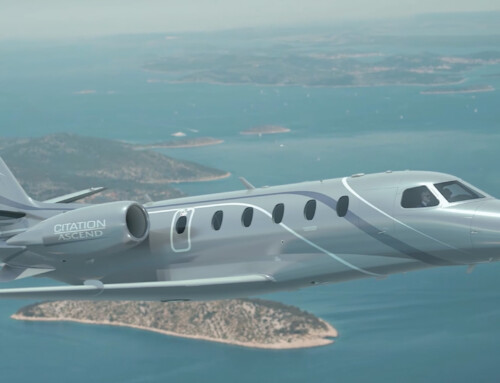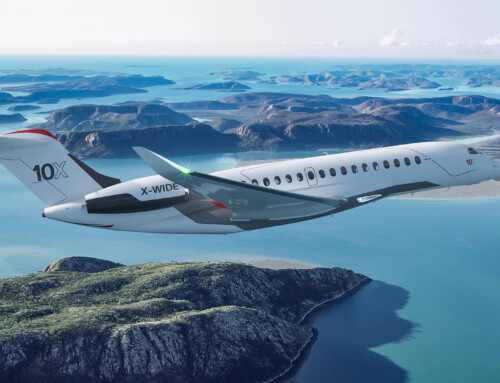Gulfstream Aerospace continues to pursue technologies that would enable building a supersonic business jet (SSBJ). The company has logged two new patents for sonic-boom mitigation technologies in the past two months alone. Queried about the new patents, a company spokeswoman told AIN, “Gulfstream has a small team committed to researching sonic-boom mitigation. We also continue to work to remove the ban on flying supersonically over land.”
The Savannah, Georgia-based aircraft manufacturer’s most prominent research in this field is its Quiet Spike, a telescoping nose meant to greatly reduce or possibly eliminate the sonic boom. It has previously tested the Quiet Spike on a NASA F-15.
Gulfstream Aerospace hosted a NASA F-15 in Savannah, Ga., on February 14 for an aerial demonstration of its Quite Spike telescopic nose spike installation. If Gulfstream were ever to decide to launch a supersonic business jet, it would have to employ some means of suppressing the sonic boom while flying over land.
Instead of building an airplane that could exceed Mach 1 only away from land, Gulfstream envisions a design with a retractable spike on the nose that extends to change the shape of the nose and alter the impact of the sonic boom. Lab testing has shown that the spike can reduce the sound of the boom, resulting in a boom that is quieter than that of the Concorde supersonic airliner by a factor of 10,000.
The spike testing on the F-15 was done to verify the structural integrity of the system, not its sonic boom suppression capability. There was some testing of the shock wave created by the spike, said a Gulfstream spokesman, but the F-15 installation won’t have much of an effect on its sonic boom. Funds for the Quiet Spike come from Gulfstream’s research and development budget, the spokesman said, but until and if the FAA changes the regulations that prohibit sonic booms in the U.S., “there’s no case for us being involved in a supersonic business jet.”

Gulfstream’s most prominent research in sonic boom mitigation for an aircraft is its Quiet Spike, a telescoping nose meant to reduce or possibly eliminate the boom that is has previously tested on a NASA F-15. In the past two months alone, it has logged two new patents for sonic-boom mitigation technologies: one for an inlet design and another for twisting wings via fuel shifting. (Photo: NASA)
The company, however, previously noted that the engine inlet is also a major factor in reducing sonic boom noise. On this note, Gulfstream received a patent on November 1 for a “sentropic compression inlet for supersonic aircraft,” which shapes “the compression surface of the inlet to defocus the resulting shocklets away from the cowl lip.” This improves inlet and interference drag characteristics, according to the patent.
Gulfstream has also developed a way to shift fuel loads to mitigate the sonic boom. In a patent issued on September 20, its engineers outline a computerized fuel redistribution system “to adjust an amount of fuel stored within a wing to minimize a twist in the wing caused by the
Source: AIN Online

 Hawker-Beechcraft Hawker 400XP
Hawker-Beechcraft Hawker 400XP Cessna Citation V
Cessna Citation V Beechcraft Premier IA
Beechcraft Premier IA Beechcraft King Air 350
Beechcraft King Air 350








